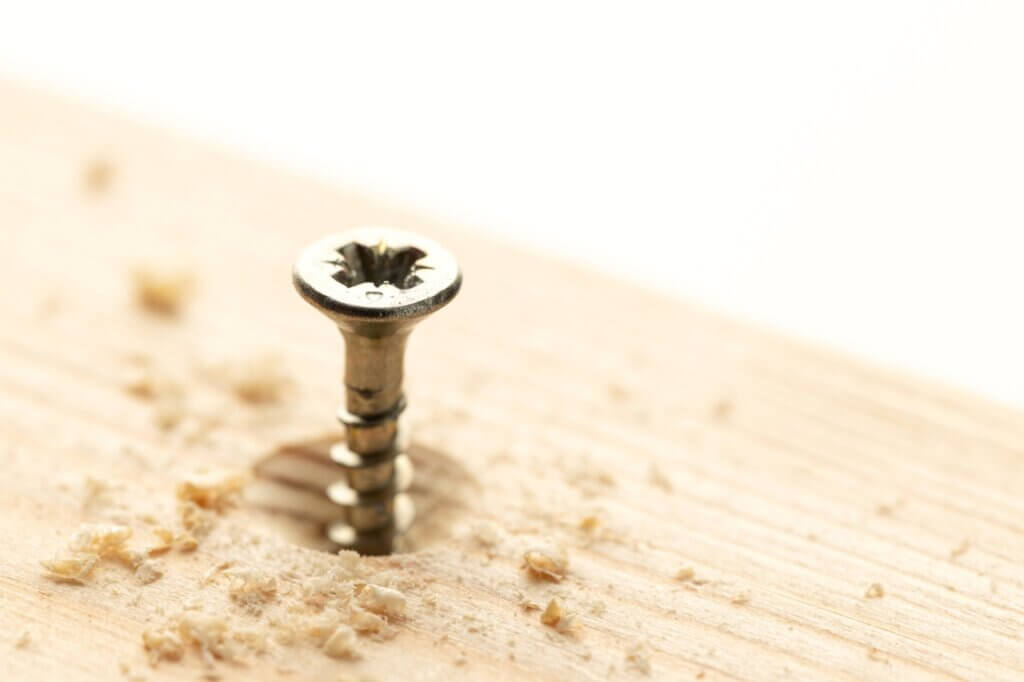5 Composite Decking Lighting Ideas
Our composite decking looks great in any setting, but you can really make your outdoor spaces shine with our decking
Products in Stock
Lowest Prices
Express Delivery
10-Year Warranty
Early April Sale. Up To 15% Off.

Building a deck is a great way to expand your outdoor living space and create a place to relax, entertain, and enjoy the good weather. And while the idea of building your own deck may sound exciting, it doesn’t come without its own set of challenges.
If this is your first time building a deck, one area that you need to pay special attention to is the mistakes that you can make and doing your best to avoid making them. That way, you’ll not only build a deck that’s functional and beautiful, but also one that’s safe, durable, and inexpensive to maintain.
To help you avoid as many mistakes as possible, in this article, we’re going to share the five most common mistakes that people make when building their decks and what you can do to avoid them.
Your deck area is more than just an extension of your home. It’s the perfect place where you can relax, entertain guests during the summer, and create unforgettable memories with your friends and family.
When a deck is built well, it will not only look beautiful and last you for many years to come, but it will positively impact the value of your home, which is always nice should you decide to sell in the future. A well-built deck also reduces issues further down the line, such as rats under your decking, rot and mould.
Every mistake that you make during the building process will, in one way or another, impact the final outcome of your deck. An error such as using the wrong materials or overlooking proper drainage can lead to long-term problems such as increased maintenance costs, structural instability, and safety hazards.
Granted, it is difficult to not make any mistakes at all, especially if you’re building the deck yourself and this is your first time taking on a project like this. However, being aware of common pitfalls and taking steps to mitigate them can make a significant difference in the final result.
With that said, here are the most common mistakes people make when building a deck and what you can do to avoid them:
One of the biggest mistakes you can make when building a deck is diving into the project without a comprehensive plan and design of the deck that you want to build.
When you don’t have an exact blueprint to follow, it’s incredibly easy to overlook critical aspects such as load-bearing capacity, the type and amount of materials you’ll need, or even getting the measurements right.
You might be wondering: do you need planning permission for decking? Not every deck requires planning permission, but there are some that do. Unfortunately, many people who build out a deck on their property don’t do any research and often end up violating local building codes or regulations.
If you fail to adhere to local building regulations, the local government may fine you, stop you from building your deck, or ask you to completely dismantle it.
Using the wrong materials is another common mistake among DIYers and contractors alike. Making this mistake will not only impact the deck’s aesthetics but also compromise its durability, safety, and long-term value.
While choosing low-quality wood may save you money upfront, the wood will deteriorate a lot quicker and can warp, crack, or rot prematurely, leading to costly repairs or even requiring you to rebuild certain aspects of the deck entirely.
If you’re on a budget, instead of opting for low-quality wood, it’s often a better idea to opt for cheap composite decking instead.
Every material is different and requires a unique approach when it comes to maintenance. One common mistake that people make is practicing general maintenance while ignoring the exact maintenance needs of the specific material their deck is made from.
Another common mistake among people who build a deck on their property is not using the right approach to laying out a solid foundation.
A poor foundation or using improper footing installation techniques can lead to uneven decking, wobbling, and in more extreme cases, a collapse.
Different soil types require different footing techniques. For instance, clay soil may need deeper footings to prevent shifting while sandy soil may require wider footings to distribute the weight and prevent sinking.

Using improper fastening and screwing techniques is another common mistake that can compromise the structural integrity of your deck. Over time, this can lead to loose boards, wobbling, or even collapse.
Securing your deck with the wrong fasteners can compromise the structural integrity of your deck. To give you an example, over time, nails can loosen, whereas using screws will not, offering better long-term stability.
One very common mistake that can damage the aesthetics and structural integrity of your deck is not pre-drilling holes before inserting the screws. This is especially true when using composite materials or certain types of wood, which are more susceptible to cracks.
If you plan on using composite materials for your deck, make sure to read our guide to installing a composite deck. It’ll show you everything you need to know for a smooth installation process.
The UK is notorious for its rainy weather, making proper drainage an essential factor to consider during the construction of your decking. Unfortunately, not many DIYers think about proper drainage until they notice the pooling of water, at which point it’s too late.
When your deck doesn’t have adequate drainage, you’ll begin to notice the pooling of water, which within itself can make the deck unusable during a rainy day. Over time, however, the materials that the deck is made out of may begin to deteriorate, resulting in structural damage and instability.
Every deck, whether it’s made out of wood, composite materials, or any other material, should be constructed with a slight slope. Incorporating a slope is one of the easiest ways to direct water away from the deck, yet it’s often completely forgotten about.
Building a deck on your property is a great idea. Unfortunately, many people underestimate what it takes to build a high-quality deck and end up making a lot of costly mistakes along the way.
Hopefully, after reading this article, you now have a better understanding of some of the most common mistakes that people make so you can avoid them when building your own deck.

Our sample pack contains a sample piece of each colour currently available. Order your free sample pack today to compare the colours and get a true feeling of the Dino Decking range!
Our composite decking looks great in any setting, but you can really make your outdoor spaces shine with our decking
If the idea of having rats under your decking makes you shiver, don’t worry. We’ll let you know the signs
Business hours
Monday: 09:00 – 17:30
Tuesday: 09:00 – 17:30
Wednesday: 09:00 – 17:30
Thursday: 09:00 – 17:30
Friday: 09:00 – 17:30
Saturday: Closed
Sunday: Closed
Contact us
01942 355968
support@dino.co.uk
Collection Address: Unit 1 Wetheral Close Hindley Ind Estate Wigan Greater Manchester North West WN2 4HS
Pages
Products
Testing
Copyright 2025 Dino Decking Ltd All Rights Reserved.
VAT Number: GB296097848.
Company Number: 10837233.